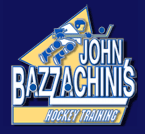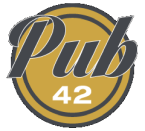Spiders game featured in national hockey magazine
April 6, 2005
The Spiders are one of two teams featured in a photo layout of the latest issue of USA Hockey Today Magazine. Images were taken during the March 17 game against the Sled Dogs. The article, entitled O say can you “C,” touches on the topic of adults getting back into the ever-growing sport of hockey and how many adult players are keeping up to their own expectations. Read the full article (offline).
Update: Because the usahockey.com site has removed the page, we have reproduced the article here for posterity.
Development
USA Hockey magazine featured an article in its April 2005 issue — O Say Can You “C” — on adult hockey, with photos taken during the Spiders’ March 17, 2005, game against the Sled Dogs. Article reprinted from USA Hockey magazine (offline).
O Say Can You ‘C’
Adult Players Just Starting Out Can Still Find Ways To Improve Their Game
If you follow the professional sports model, it’s all downhill after you hit 30. But don’t tell that to the 45-year-old winger on your adult recreational league team. He may have three kids and work 60 hours a week, but he still wants to be the best player in the league.
Even if it is in the C league.
Adult hockey players who are new to the game often find themselves playing a challenging sport for the first time with little coaching and a body that’s a lot less forgiving.
But there are some simple things new adult players can do to improve their game, and it all begins with their skating.
It’s All About Skating
If you’re lagging behind the other players on your team, chances are the culprit is your skating. Ronald Nowakowski, rink coordinator for one of the Holiday Rinks in Buffalo, N.Y., says he gives new players one simple piece of advice.
“The first thing I suggest is getting them into a learn-to-skate program and then go from there,” Nowakowski said.
Chuck Burch, assistant manager for the Greensboro (N.C.) IceHouse, says some adults want to rush into league play. He advises new players to take up to a year of learn-to-play classes before getting into a league.
“Don’t take it too seriously. You’re out there to enjoy yourself, you’re out there for exercise and camaraderie”
— Chuck Burch
“People want to concentrate on puck work and shooting slapshots,” he said, “They need to be doing crossovers and skating backwards and learning to stop. The good thing about class is you typically get solid instruction. But more importantly than that, you are getting the ice time, you’re getting repetitions and being able to practice outside the game situation.”
Mike Baxter, who runs an adult league down the road in Raleigh, N.C., agrees. He suggests that players in the lower leagues try to get as much ice time as possible.
“The only way you get better is through how much time you get on the ice,” he said. “Some of the guys in C league are not the best skaters, and skating is the biggest part [of the game].”
Public skating sessions are an inexpensive way to get the ice time you need. Burch says even if you’re just skating laps it will make you feel more comfortable come game time.
“Your skating stride and form is becoming more natural, so the next time you’re in a game you don’t have to worry about that,” he said.
Am I Supposed To Cover The Point?
Once you feel your skating is the best it can be, you might want to make sure you know where you’re supposed to be on the ice at any given time. Hockey moves quickly, and the transition from offense to defense happens in an instant.
Pat Bush teaches adult learn-to-play classes at the Garner (N.C.) IceHouse. He says many new players don’t understand the basic rules of the game. He spends considerable time on defensive responsibilities and positioning. Otherwise, Bush says, new players spend the game chasing the puck.
“It’s like rats and cheese,” he said. “They all take off for the puck.”
Bush also emphasizes a skill that even some top-level players have a tough time understanding — backchecking.
“When we’re attacking, go to the puck as soon as the other team gets it,” Bush tells his players. “But when you lose the puck you still have to pursue.”
Another way to improve your positional play is to keep your feet moving, Bush says. Goal scorers such as Brett Hull have a way of finding open ice to get the perfect shot.
“C-league players tend to stand still,” said Bush. “They don’t understand to keep moving, and get to that open spot.”
Off-Ice Work
When it all comes together in a rush up ice or a tic-tac-toe passing play, then even the slowest player on the ice feels a rush of adrenaline. But those plays don’t come without practice. Bush suggests using off-ice stick and puck drills to improve your on-ice passing.
“C-league players tend to be the world’s worst for passing and shooting the puck. They whack at it,” Bush said. “Play with a tennis ball off the ice. A tennis ball acts like that little silly puck that bounces all over the place.”
Keep Your Head Up
Even the greenest of hockey players knows that looking down at the puck can be hazardous to his health. Coaches also suggest keeping your head up even when you’re sitting on the bench. By watching the game you can learn the tendencies of your opponents and how better players on your team maneuver the ice.
“Pick someone on the team and watch what he does, just concentrate on that one particular guy,” Nowakowski said. “Watch what they do on the power play.”
The speed of a game, even in a lower rec league, is too fast for a new player to have the time to hone new skills. Baxter recommends taking a learn-to-play class to supplement your league play.
“During a game you’re not going to learn all that much,” he said. “If you do something wrong no one has the time to explain that to you.”
Though hockey is a great sport that gives you a total-body workout, it can be frustrating to learn, especially for adults who are learning the game. Your 13-year-old may be able to dangle like Mike Modano, but that might be a little harder for you.
“Hockey is a lot easier for kids to pick up. Kids also have an element of no fear. Adults see the risks and are a little more reserved,” Burch said.
“Don’t take it too seriously. You’re out there to enjoy yourself, you’re out there for exercise and camaraderie.”
Michael Huie is the features editor with the Winston-Salem (N.C.) Journal.













